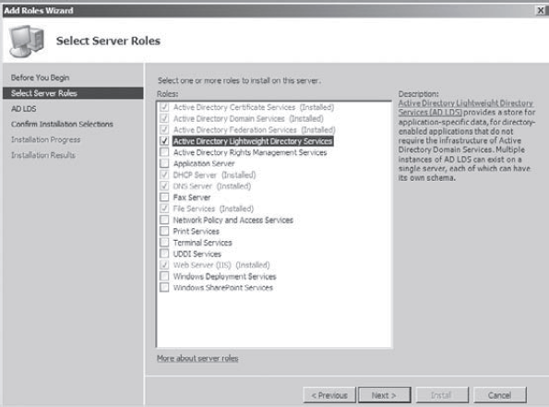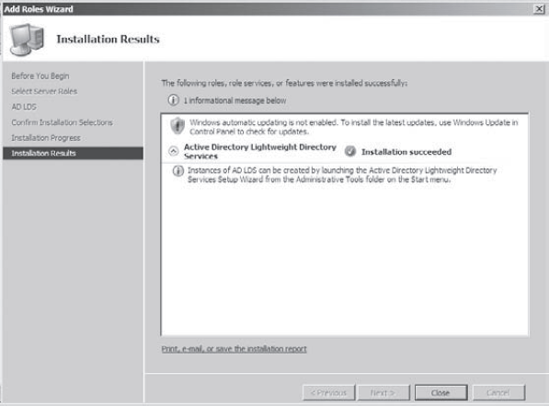Active Directory Lightweight Directory Services (AD LDS) is a Lightweight Directory Access Protocol (LDAP)
directory service. LDAP is an application protocol used for querying
and modifying directory services. This type of service allows
directory-enabled applications to store and retrieve data without
needing the dependencies AD DS requires.
You can understand LDAP by thinking of directory
services as something similar to an address book—a set of names (your
objects) that you organize in a logical and hierarchical manner (for
example, alphabetically). Each name in the address book has an address
and phone number (the attributes of your objects) associated with it.
LDAP allows you to query or modify this address book.
1. Installing AD LDS
In Exercise 1 we will install AD LDS by using the Server Manager MMC.
Open the Server Manager MMC by selecting Start => Administrative Tools => Server Manager. In the left pane, click Roles. In the Roles Summary section of the right pane, click Add Roles. On the Select Server Roles screen, click the Active Directory Lightweight Directory Services check box and click Next.

On the Introduction To AD LDS screen, click Next. The Confirm Installation Selections screen shows you all the services and roles that you are about to install. Click Install.

A progress screen will appear for a few minutes. After the installation is finished, click Close.

|